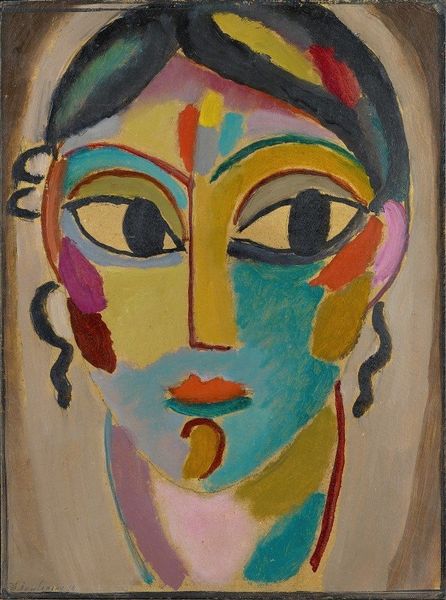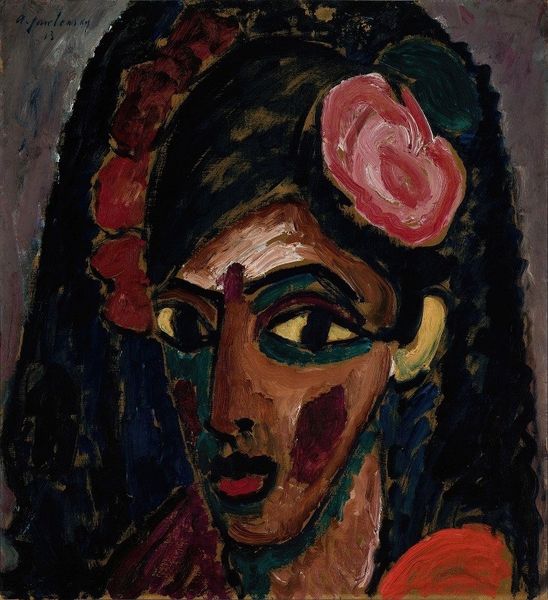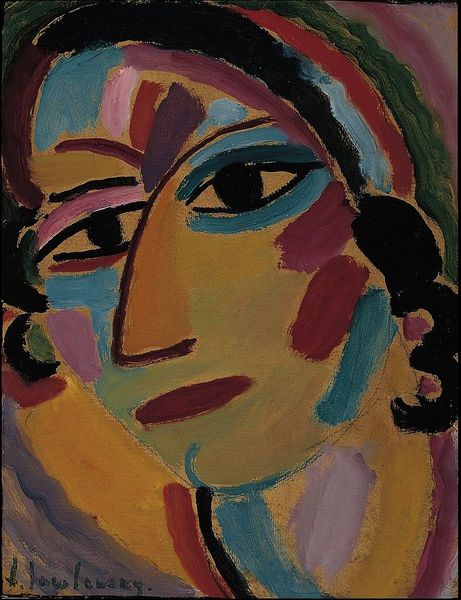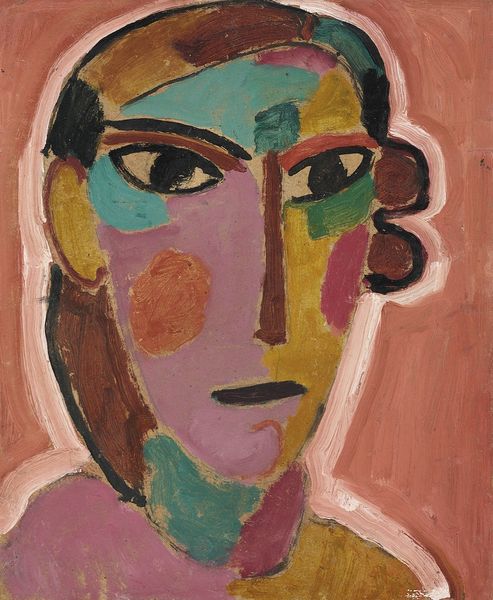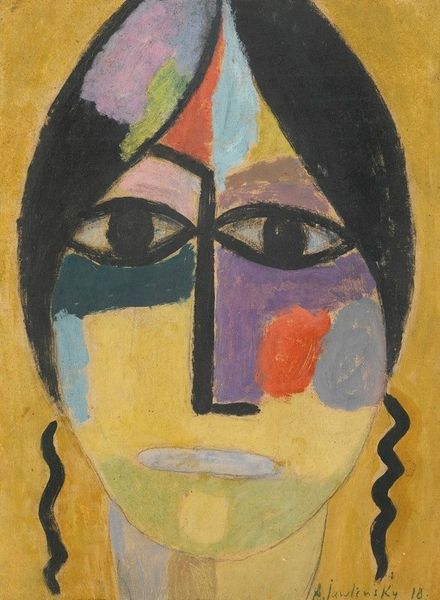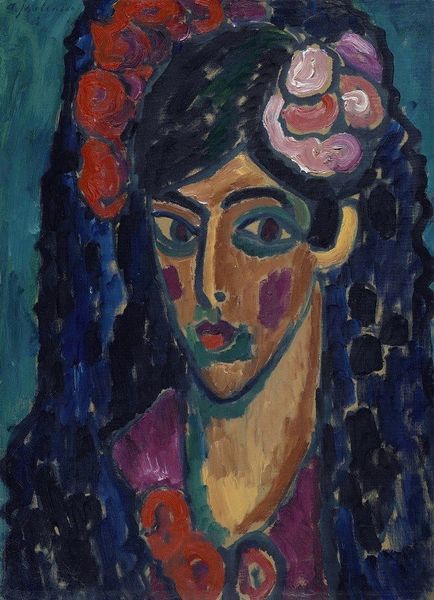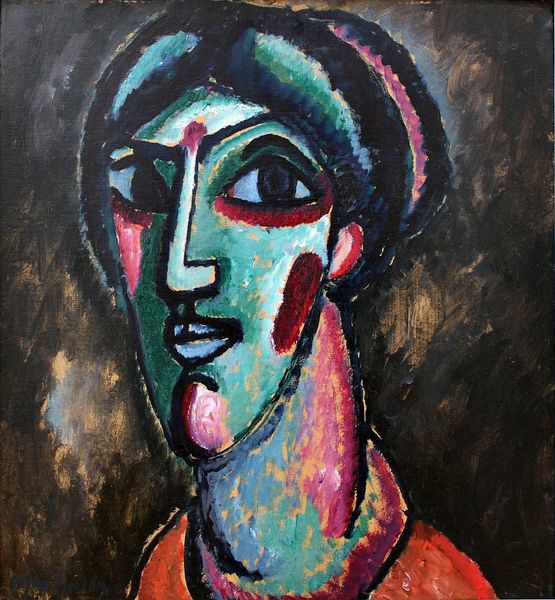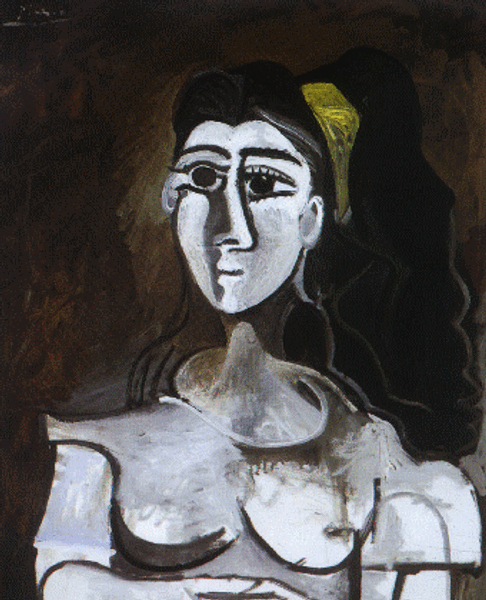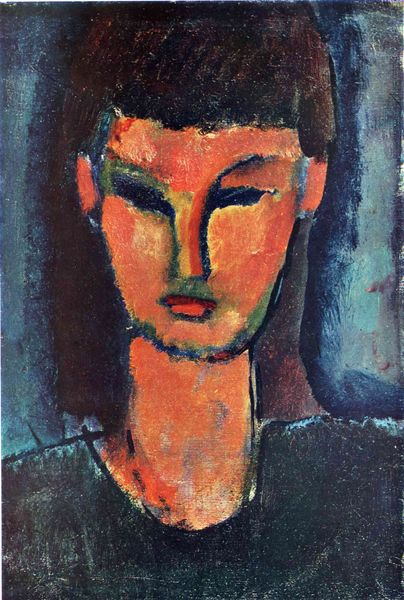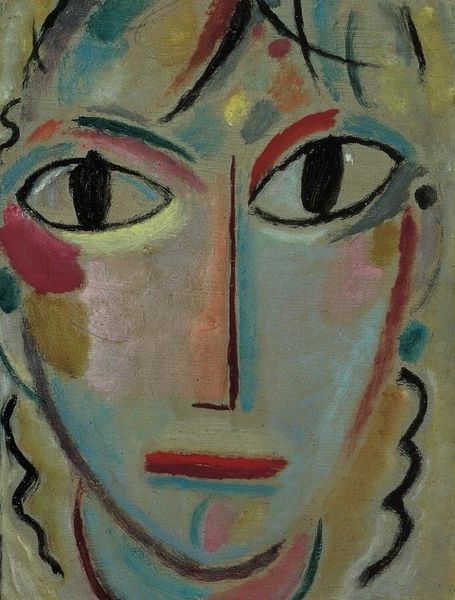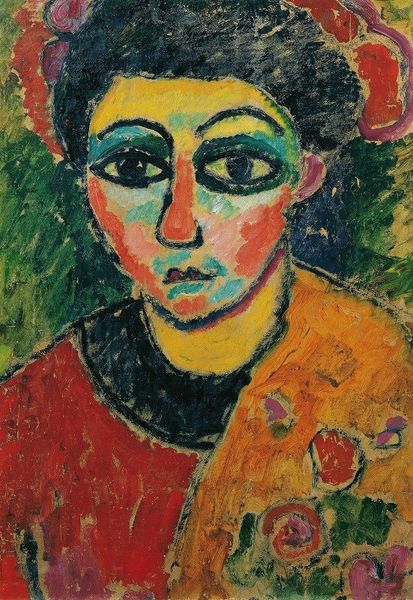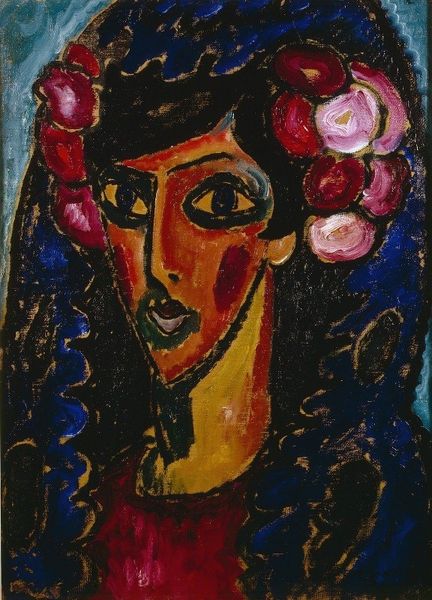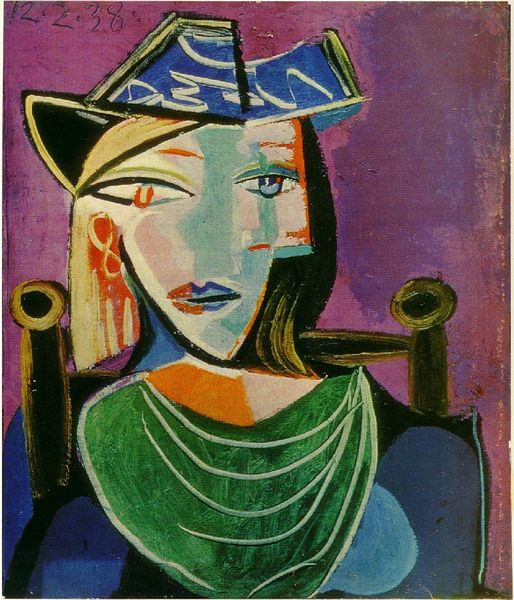
painting, oil-paint
#
portrait
#
figurative
#
painting
#
oil-paint
#
german-expressionism
#
figuration
#
oil painting
#
expressionism
#
facial portrait
#
portrait art
Copyright: Public Domain: Artvee
Curator: Here we have Alexej von Jawlensky’s "Brown Curls," created in 1913. Look at how the oil paint is applied to form this striking portrait. Editor: Immediately, I’m struck by the figure’s gaze, so intense and almost unsettling. The palette is vibrant, yet it carries an air of melancholy. What visual cues contribute to that effect, do you think? Curator: It’s fascinating to consider Jawlensky’s artistic process. The materiality of the thick oil paint contributes so much. There is no blending. Each bold stroke stands apart, revealing the labor of its making, pushing back against the polished, slick academic styles prevalent at the time. This directness in process seems vital to German Expressionism. Editor: Absolutely, the application is far from seamless. Those almost mask-like areas of contrasting color definitely heighten the symbolic tension. Note the deep, almost questioning eyes, set off by teal paint—a color often associated with spiritual awakening but also anxiety. Does that resonate with any historical understanding of its creation? Curator: Jawlensky's engagement with folk art traditions and non-Western art profoundly influenced his choices, breaking with Western representational conventions and their production. Consider the Russian Orthodox icons he studied. The flatness and the intensity are visible in works like this. It is an important statement about the consumption of influences at this time. Editor: It definitely channels the power of icons, yet stripped of overtly religious context, focusing the symbolic weight entirely on the human presence. The 'brown curls' themselves seem almost secondary to the psychological presence conveyed by the face itself, as if the title directs the viewer away from the emotional heart of the work. Curator: Right. While the "how" of its making clearly indicates Expressionism, what's so radical, perhaps, is how his handling of material disrupts our expectations for the 'what' of art in early 20th-century European culture. The tactile presence is confrontational. Editor: Yes. In that gaze, I sense both vulnerability and strength. It's as if the subject, whoever she may have been, exists within a liminal space, an emotional landscape rendered in striking color and bold form. That's the lingering power, for me. Curator: For me, it's about how that power arrives, from such humble materiality, which reflects art's profound capacity for expression.
Comments
No comments
Be the first to comment and join the conversation on the ultimate creative platform.
